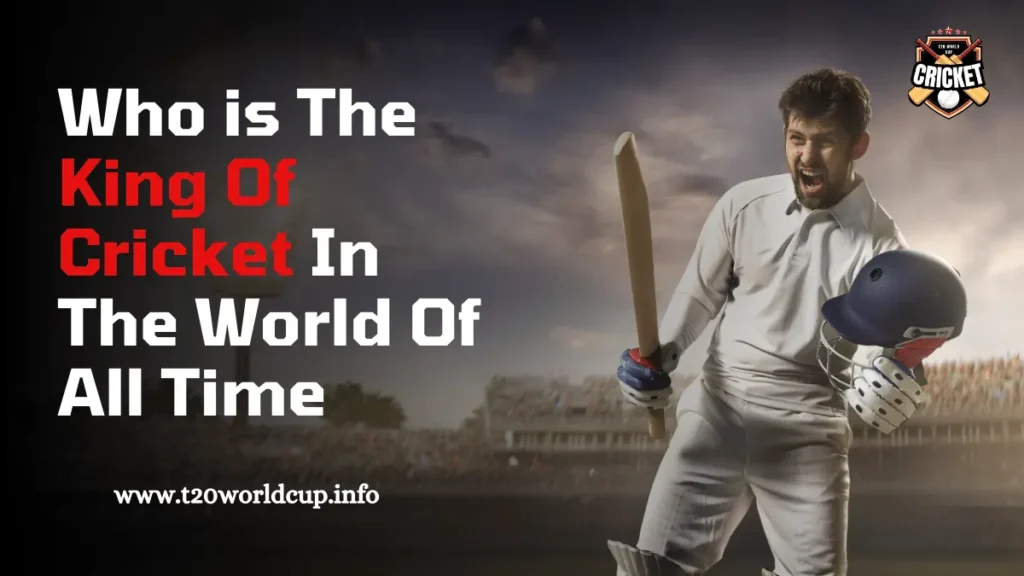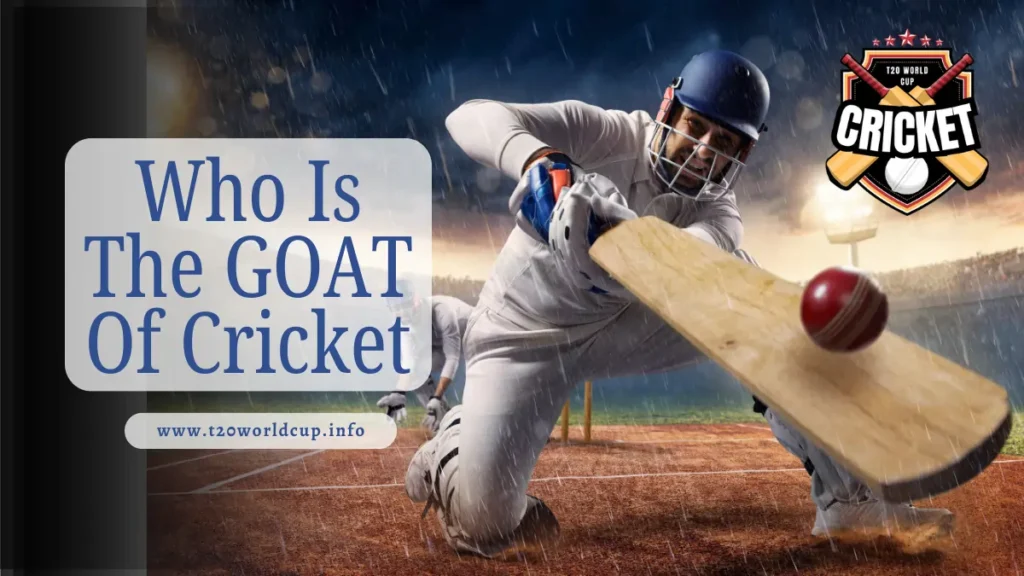In the big picture of sports history, few games are as loved worldwide as cricket. You can hear the loud cheers in crowded stadiums and see kids playing with makeshift bats in quiet streets. But there’s one question cricket fans have wondered about for ages: Who Invented cricket?
Let’s go back in time to find out where cricket came from. It’s like opening an old book full of surprises, twists, and stories that go back in time across different places.
Cricket began in small villages and grew into a huge international sport. But we’re still trying to figure out who first developed it. Some say it was people in England, while others have different ideas. It’s become a mystery, talked about by experts and fans alike.
But we’ll explore why it’s so special beyond discovering where cricket originated. Cricket unites people, regardless of their origins. It’s a game that breaks barriers, inspires players, and creates lifelong fans. As we dig into the past, we’ll discover how cricket became part of our society, celebrating its diversity and wide appeal.
The History Of Cricket- A Complete Story
Cricket’s journey, from 18th-century evolution to global prominence showcases iconic players, diverse nations, and the transformative impact of leagues. Let’s explore!
The Origins of Cricket
Cricket’s roots are ancient and mysterious, making it challenging to credit a sole inventor. The earliest known mention of cricket dates to late 16th century England. Records show a game played in the Weald, southeastern England, in 1597, indicating its rural popularity. The sport likely evolved from earlier ball games, gradually gaining structure and rules.
Cricket’s early history reflects its grassroots appeal, spreading across English countryside communities. Its evolution from an informal pastime to an organized sport mirrors societal changes. Despite its enigmatic origins, cricket’s enduring legacy as a beloved game transcends borders, captivating enthusiasts worldwide across diverse cultures and generations.
Cricket’s Recognition in the 17th Century
In the 17th Century, cricket transitioned into more formal settings, propelled by shifts in English society. Social, economic, and cultural changes played pivotal roles in its ascent. Cricket’s rise aligned with the emergence of the gentry and aristocracy, linking it with notions of refinement and gentility. The sport’s popularity soared, solidifying its reputation as a pursuit for gentlemen.
This association with the elite further elevated cricket’s status, shaping its ethos and appeal. Amidst evolving class dynamics, cricket became a prestige and sophistication symbol. Its journey from rustic origins to an emblem of social status underscores its enduring cultural significance.
Evolution in the 18th Century
In the 1700s, cricket saw big changes, becoming more popular in important schools. The Hambledon Club, formed in 1768 in Hampshire, was key in clarifying the game’s rules. Matches became more organized, focusing on fairness and being a good sport.
The Marylebone Cricket Club (MCC), started in 1787, made cricket rules more standard, affecting the game worldwide. In the 18th Century, cricket spread globally, with the first international game between the United States and Canada in 1844, showing how much people everywhere liked it and paving the way for its growth.
Notable Figures in Cricket’s Early Days
While we’re not certain who exactly invented cricket, a few people played important roles in shaping the game. One of them was William Gilbert Grace, a famous English cricketer from the late 1800s to the early 1900s. He made big contributions as a player and a respected figure, helping cricket grow.
Another important person was Thomas Lord, who loved cricket a lot. He set up the first cricket field in London, called Lord’s Cricket Ground, back in 1787. Lord’s became a symbol of cricket traditions, hosting many important matches and events.
Colonial Influence
The British Empire played a big role in spreading cricket worldwide, taking it to new places as colonies expanded. Cricket became more popular as British territories grew, fitting into colonial societies no matter their culture or location. It became a big part of colonial life, bringing people together across different backgrounds.
A big moment in cricket’s global journey was the first match between Australia and England in 1877, marking an important step in its worldwide path. This event showed how much people everywhere liked cricket and made it clear that it was a sport enjoyed by many cultures. It led to more international competitions and made cricket even more popular worldwide.
Cricket in India
Cricket has a big place in India’s history. The British brought it during the 18th Century, slowly becoming very popular in the country. After India became independent in 1947, cricket became even more beloved, becoming a favorite national pastime.
Cricket’s journey in India shows a mix of British influence and local passion, bringing people together across different regions and communities. In India, cricket means more than just a game; it represents the country’s culture, dreams, and shared enthusiasm, making it a vital part of India’s identity and a reminder of its strong sports legacy.
Post-Independence Era
After independence, cricket legends like Sachin Tendulkar, Kapil Dev, and Sunil Gavaskar became national heroes in India. India’s win in the 1983 Cricket World Cup, led by Kapil Dev, made cricket hugely important in the country, almost like a religion. Their successes showed how good India was at cricket and sparked a real love for the sport nationwide.
Their amazing performances went beyond just sports, inspiring many generations and bringing together people from all walks of life under cricket’s banner. These cricket stars became symbols of pride, representing the hopes and dreams of millions of Indians.
The Modern Era
Cricket has changed much over the long run and has become famous worldwide. More limited designs like One Day Internationals (ODIs) and Twenty20 (T20) cricket have made the game more interesting to new fans. The Worldwide Cricket Gathering (ICC) began in 1909 and has been significant in arranging and advancing cricket universally.
The ICC Cricket World Cup, which started in 1975, unites the best groups and is a major occasion in the cricket schedule. The T20 World Cups have made cricket much more energizing for fans worldwide. These competitions show how cricket has advanced and can catch individuals’ advantage over various societies and nations.
Cricket’s Global Impact
In the 21st Century, cricket has become popular worldwide, with countries like South Africa, the West Indies, Sri Lanka, and New Zealand producing cricket stars. The Indian Premier League (IPL) started in 2008 and changed cricket significantly, making it more popular and bringing in fans worldwide.
The IPL’s new way of playing cricket, mixing sports with entertainment, excited people everywhere and made cricket a big commercial success. As cricket keeps changing, the contributions of different countries and the IPL’s impact show how cricket can unite people worldwide because of their shared love for the game.
Fundamental Rules Of Cricket
Like any game, cricket has many basic standards that oversee ongoing interaction. While there are numerous rules and regulations in cricket, here are some of the fundamental ones:

1. Players
A cricket crew comprises 11 players, one assigned to the batting group and the other to the bowling (handling) group.
2. Innings
A standard cricket match comprises two innings for every group. Each group has the chance to bat and bowl once.
3. Pitch
The game is played on a roundabout or oval-molded field, with a rectangular 22-yard-long pitch in the middle. The pitch has two arrangements of three stumps each, with two bails put on top of them at each end.
4. Batting
The essential target of the batting group is to score runs. Players attempt to score runs by stirring things around town and running between the wickets. They can likewise score runs by hitting limits, like fours (ball arriving at the limit in the wake of skipping) and sixes (ball crossing the limit without contacting the ground).
5. Bowling
The bowling crew attempts to excuse the hitters and limit the number of runs the batting group scores. Bowlers convey the ball toward the batsman to get them out through different means, for example, getting them bowled, captured, puzzled, or run out.
6. Dismissals
There are several ways a batter can be dismissed:
- Bowled: The ball raises a ruckus around town, and the bails are ousted
- Caught: The batsman stirs things around town, and a defender gets it before it contacts the ground.
- LBW (Leg Before Wicket): The ball raises a ruckus around the town’s leg by the stumps, keeping the ball from stirring things up around town.
- Run Out: The batsman neglects to arrive at the wrinkle before the handling group removes the bails with the ball.
- Stumped: The wicketkeeper eliminates the rescues while the player is off the wrinkle and not endeavoring a run.
- Hit Wicket: The batsman removes the bails with their bat or body while endeavoring a shot or running.
- Retired Hurt: A batter must pass on the field because of injury during their innings.
7. Fielding Positions
The handling group positions its players decisively around the field to forestall runs and take gets. Explicit positions incorporate slips, crevasse, point, cover, mid-off, mid-on, midwicket, square leg, fine leg, and third man.
8. Umpires
Two on-field umpires who implement the principles simply decide and signal runs, excusals, and limits to direct the match.
How Many Players In Cricket
A cricket team has 11 players. These players can be broadly categorized into different roles based on their specializations:
- Batsmen: These two players are on the field all the while, meaning to raise a ruckus around town and score runs. They alternate batting and switch places after each run.
- Bowlers: They bowl the ball towards the batsman, attempting to excuse them or limit runs. A group has a few bowlers who bowl reciprocally, each bowling a set number of conveyances called an “over.”
- Fielders: The leftover eight players from the handling group decisively position themselves to get the ball the batsman hits, forestall runs, and endeavor to excuse the batsman.
- Wicket-keeper: This particular defender remains behind the batsman’s wicket and is answerable for getting the ball, assuming the batsman misses it, among other obligations.
10 Interesting Facts About Indian Cricket
Here are 10 interesting facts about Indian cricket.
- Sachin Tendulkar’s Records: Sachin Tendulkar, known as the “Master Blaster,” holds numerous records in cricket, including the most international runs scored and the most international centuries.
- 1983 Cricket World Cup Victory: India’s victory in the 1983 Cricket World Cup under the leadership of Kapil Dev marked a watershed moment in Indian cricket history, inspiring a generation of cricketers and fans.
- Indian Premier League (IPL): The IPL, launched in 2008, revolutionized cricket with its franchise-based Twenty20 format. It has become one of the most lucrative and popular cricket leagues, attracting top players worldwide.
- Virat Kohli’s Captaincy: Virat Kohli, one of the most dynamic batsmen of his generation, captained the Indian cricket team across formats, leading them to numerous victories and breaking several records along the way.
- MS Dhoni’s Leadership: MS Dhoni, affectionately known as “Captain Cool,” led India to victory in multiple ICC tournaments, including the 2007 ICC T20 World Cup and the 2011 ICC Cricket World Cup.
- Rise of Women’s Cricket: The Indian women’s cricket team has recently gained significant recognition and success, reaching the final of the 2017 ICC Women’s Cricket World Cup and consistently performing well in international competitions.
- Spin Bowling Legacy: India has delivered unbelievable twist bowlers like Anil Kumble and Harbhajan Singh, who played essential parts in India’s progress in Test and restricted overs cricket.
- Historic Test Matches: India’s memorable Test triumphs, remembering the popular success against the West Indies in 1971 and the series win in Australia in 2018-2019, have established its impressive power in Test cricket.
- Under-19 Cricket Achievements: India’s strength in the ICC Under-19 Cricket World Cup is important, having won multiple times, with players like Virat Kohli and Yuvraj Singh arising out of this stage.
- Cultural Influence: Cricket is unique in Indian culture, rising above limits old enough, orientation, and financial status. It fills in as a bringing together power, uniting different networks, and touching off enthusiasm and pride cross country.
Conclusion
The story of cricket’s beginnings is full of history and tradition. Though no one invented cricket, it started in medieval England as a simple game enjoyed by folks in the countryside.
As time passed, cricket changed from casual matches in fields to a more organized sport with clear rules and competitions. Its journey reflects the changes in society, culture, and history. Cricket became popular worldwide, not just in England.
We’re unsure where it came from, but cricket’s impact is clear. It brings people together from different backgrounds and cultures, whether playing in a local park or on a big stage.
The real beauty of cricket isn’t in who created it but in the players, fans, and communities who love and support it. They keep the spirit of the game alive for future generations.
FAQs- Who Invented Cricket
Is there a specific date or person credited with inventing cricket?
No, cricket’s development was gradual and evolved over centuries. It originated as a recreational pastime and gradually became organized with standardized rules and gameplay.
Are there any historical records or evidence of cricket’s early origins?
Historical records suggest that cricket-like games were played in England as far back as the 13th century. However, the formalization of cricket as a sport with defined rules and regulations occurred over time.
Was cricket always popular, or did it gain popularity over time?
Cricket’s popularity grew steadily, especially during England’s 17th and 18th centuries. It became more organized with the establishment of cricket clubs and formal competitions.



